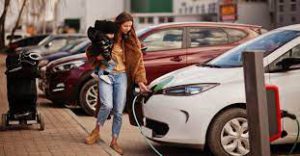How to measure Electric Car Efficiency ??? It’s high time to learn km/kWh
Large of Automobile manuafacturers are coming out with EVs and it is high time that you understand the efficiency of an electric car. In simple words..The higher is the km figure in km/kWh, the better is the efficiency. For example, 10 km/kWh is better than 5 km/kWh.
While driving Volvo’s XC40 Recharge and MG Motor’s ZS EV recently—both are electric cars—a constantly changing figure on the trip computer caught my attention. It was km/kWh and kWh per 100 km.
Having being used to km/litre over the years,the new comparisions come as a surprise.
What is kWh?
Short for kilowatt-hour, kWh is a unit of electricity. For example, 1 kWh is when 1,000 watts of electricity is used for one hour (a 100-watt light bulb operating for 10 hours, or a 500-watt air cooler used for two hours, or a 1,000-watt hot water geyser used for one hour).
Broadly speaking, in the Indian electricity cycle, 1 kWh is one unit of electricity (priced in the range of Rs 7-8 ).
What is kWh in an EV?
An electric car’s battery storage is measured in kWh. The XC40 Recharge has a 78 kWh battery pack, while the ZS EV has a 50.3 kWh battery pack. Tata’s Nexon EV has a 30.2 kWh battery pack and Tata’s Tigor EV has a 26 kWh battery pack.
The more expensive and bigger a car, the bigger battery it will have. For example, Tesla Model S (currenyly not available in India) has a 100 kWh battery, and the upcoming Mercedes-Benz EQS (to be launched in India later part of this year) might have a 115 kWh battery pack.
More kWh means more driving range?
Yes and no. Driving range of an electric car also depends on various other factors, like power produced by the electric motor (usually more power means lower range per kWh), overall weight of the electric car (more weight means lower range per kWh), the way the battery cells have been packaged and their operational efficiency, useable battery power (100 kWh doesn’t mean all can be used), and so on.
Do you need to bother?
Yes, electric cars are very driver-specific. One driver might be able to run an electric car for, say, 200 km on a full battery pack, while another driver may be able to take the same car (under similar external driving conditions) more than 300 km. It all depends on the way you are driving. A light foot on the accelerator pedal (refraining from immediate acceleration and braking) will lead to more efficiency and more driving range, while a heavy foot (sudden acceleration and braking) will reduce driving range.
The measure of that efficiency is displayed on almost all electric cars in the form of km/kWh and kWh per 100 km.
The higher is the km number in km/kWh (like I was able to do 7 km/kWh on the XC40 Recharge), the better is the efficiency. For example, 10 km/kWh is better than 5 km/kWh.
The lower is the kWh number in kWh per 100 km, the better is the efficiency (in it, the scale has been turned upside down).

 April 19, 2022
April 19, 2022 Blog Admin
Blog Admin



